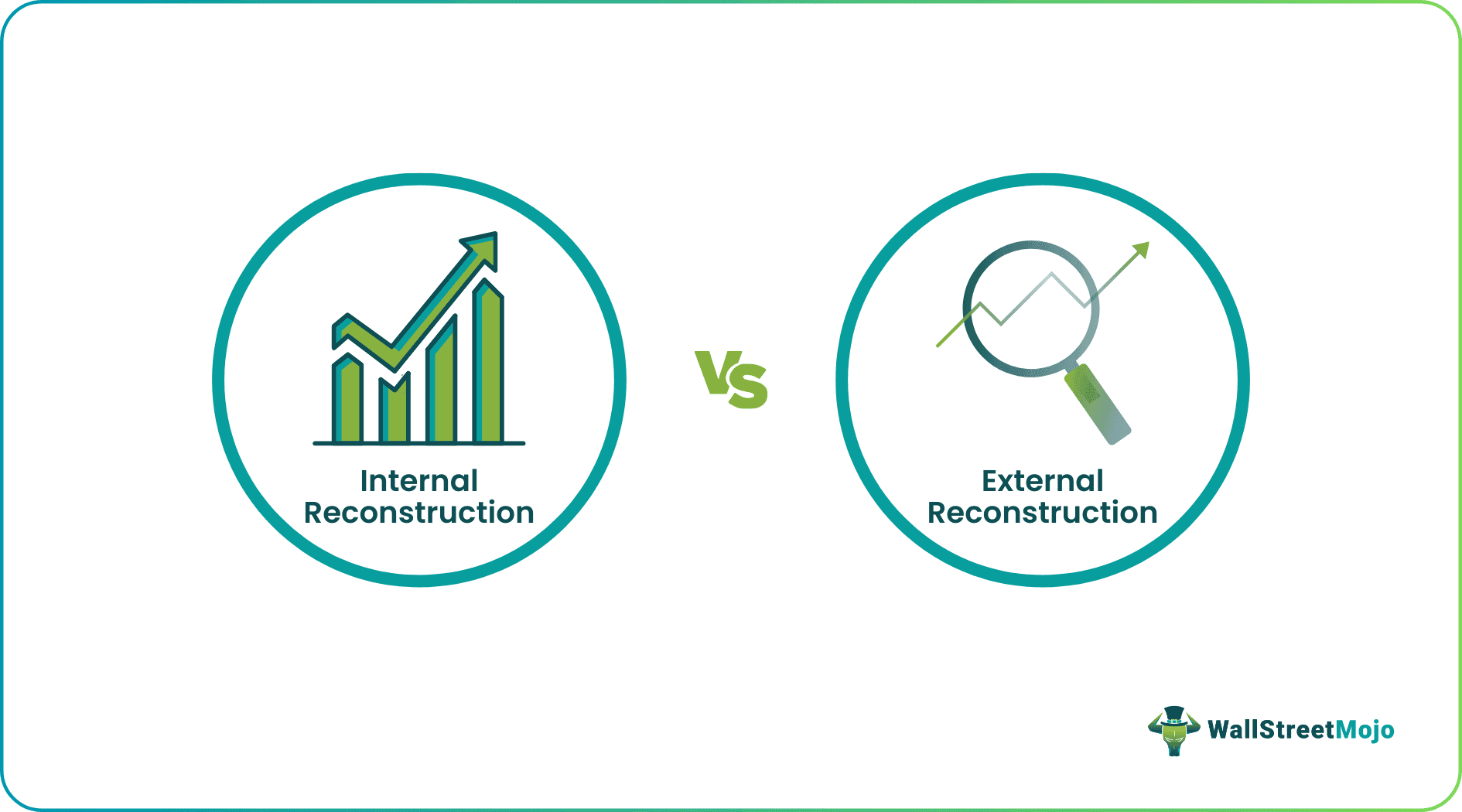Difference Between Internal and External Reconstruction
Table Of Contents
Difference Between Internal And External Reconstruction
The difference between internal and external reconstruction lies in the capability of an entity to bounce back from worst situations or having to have an external element interfere as savior. Internal reconstruction is where the company arranges to organize and make changes in the assets and liabilities to improve the financial position In contrast, external reconstruction is where an existing company is liquidated and taken over by another newly formed company.

Internal and external reconstruction defines the corporate restricting methods that organizations consider when they are in severe financial trouble. While the former approach advocates coming out of the situation without liquidating the company or transferring the ownership to an external party, the latter leads to the transfer of assets and liabilities, which is considered similar to amalgamation.
Internal vs External Reconstruction - Comparative Table
| Basis for Comparison | Internal reconstruction | External reconstruction |
|---|---|---|
| 1. Inherent meaning | IR is a restructuring method that doesn’t create a new company via liquidation. | ER is a restructuring method that creates a new company via liquidation. |
| 2. Application | It is done to ensure an inner re-arrangement of financial structure. | It is done to form a new company. |
| 3. Approval of court | Required. | Not required. |
| 4. Existence | No new existence is formed. | A new company is formed. |
| 5. Liquidation | Liquidation isn’t done. | Liquidation is done. |
| 6. Process | Very slow, tedious, and takes a long time. | Quick and swift, doesn’t take much time. |
| 7. Losses against profits | It can set off past losses against future profits. | Since a new company is established, losses of the old company can’t be set off against the profits of the new company. |
What Is Internal Reconstruction?
Internal reconstruction is the financial reconstructing method where the companies try their best to emerge out of even the worst situations themselves. They try to improve their strategies, change their assets, handle their liabilities in the most efficient ways, and make sure to begin their journey of recovering from a financial crisis.
Whatever measures are taken, it is by the organization and the internal members only. There is no intervention from anyone outside the entity. This method is also known as reorganization where the companies are allowed to continue. Normally, the share capital is reduced to cover up for the losses incurred by the company.
What Is External Reconstruction?
External reconstruction refers to the corporate restructuring method where the companies suffering from losses and financial crises are ready to sell themselves to a new company. The new company that acquires the former purchases the assets as well as the liabilities of the old company. In this approach of reconstruction, the company goes into liquidation state and involves an external entity to help them get out of the crisis.
Internal vs External Reconstruction Infographics

Key Differences Between Internal and External Reconstruction
The key differences between the two have been listed down below. Let us have a quick look at them:
- Internal reconstruction needs a lot of time and statutory requirements because, in internal reconstruction, the company has to take the permission of every stakeholder and the court. On the other hand, external rebuilding can be done immediately without consent from the court.
- Both of these reconstructions ensure changes in financial structure. But since internal reconstruction doesn't liquidate, things become difficult.
- In the case of internal reconstruction, the company's losses can be set off against the company's future profit. In the case of external reconstruction, the losses of an old company can't be set off against the profit of the new company.
- Internal reconstruction is done when there is a chance for the existing company to bounce back. External reconstruction is done to start the whole thing afresh.
- The accounting required for both internal reconstruction and external reconstruction is complex.
Internal vs External Reconstruction - SImilarities
Internal and external reconstruction is valid for companies that want to reconsider their approach and future strategy. Both of these depend on the decision and the permission of the stakeholders involved in the whole process.
However, both of these processes are much more complex than perceived. But if you want to start afresh and your stakeholders are with you, you can be better off by taking the path of external reconstruction since no permission is required from a court in the case of external reconstruction.
